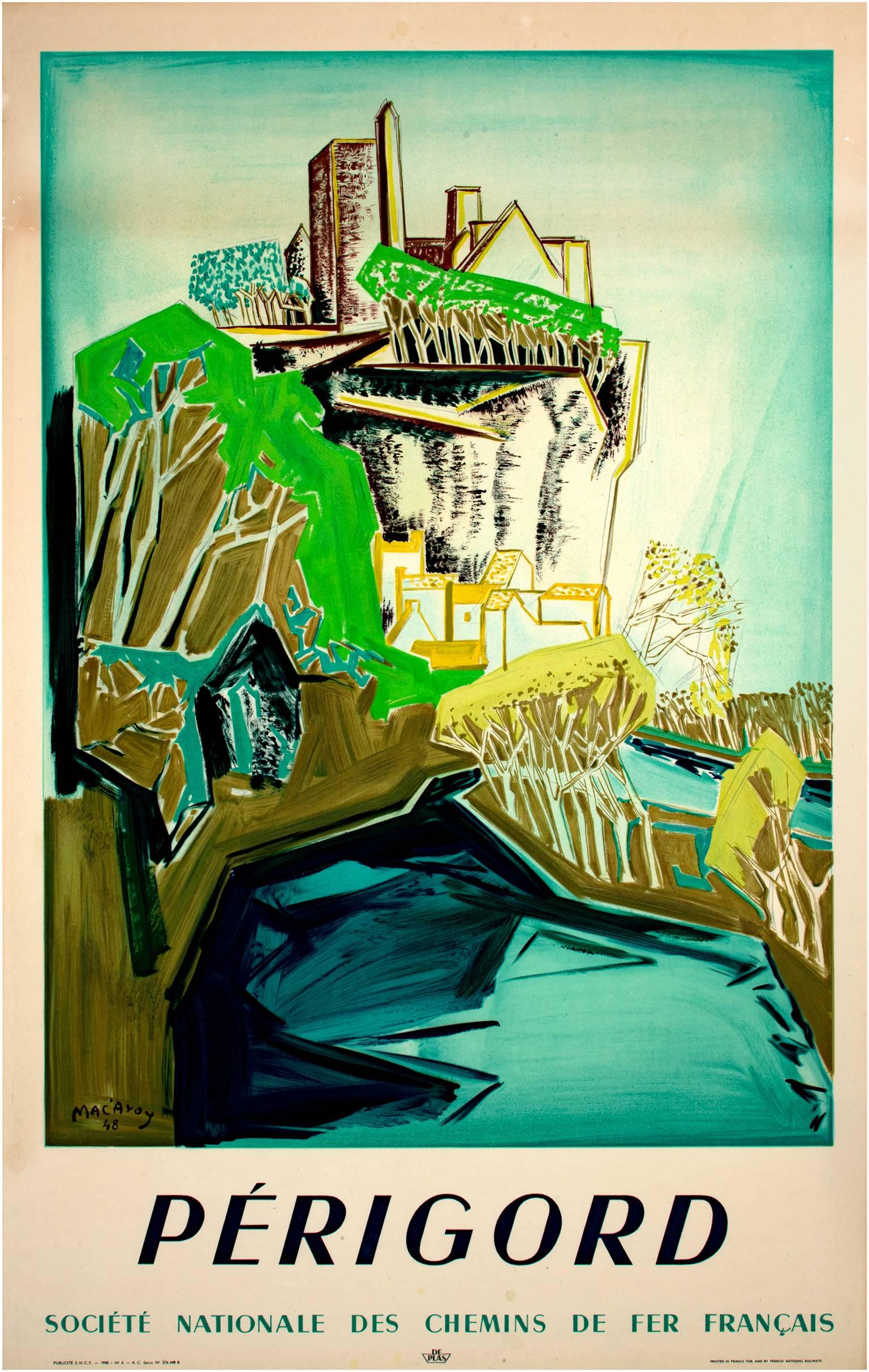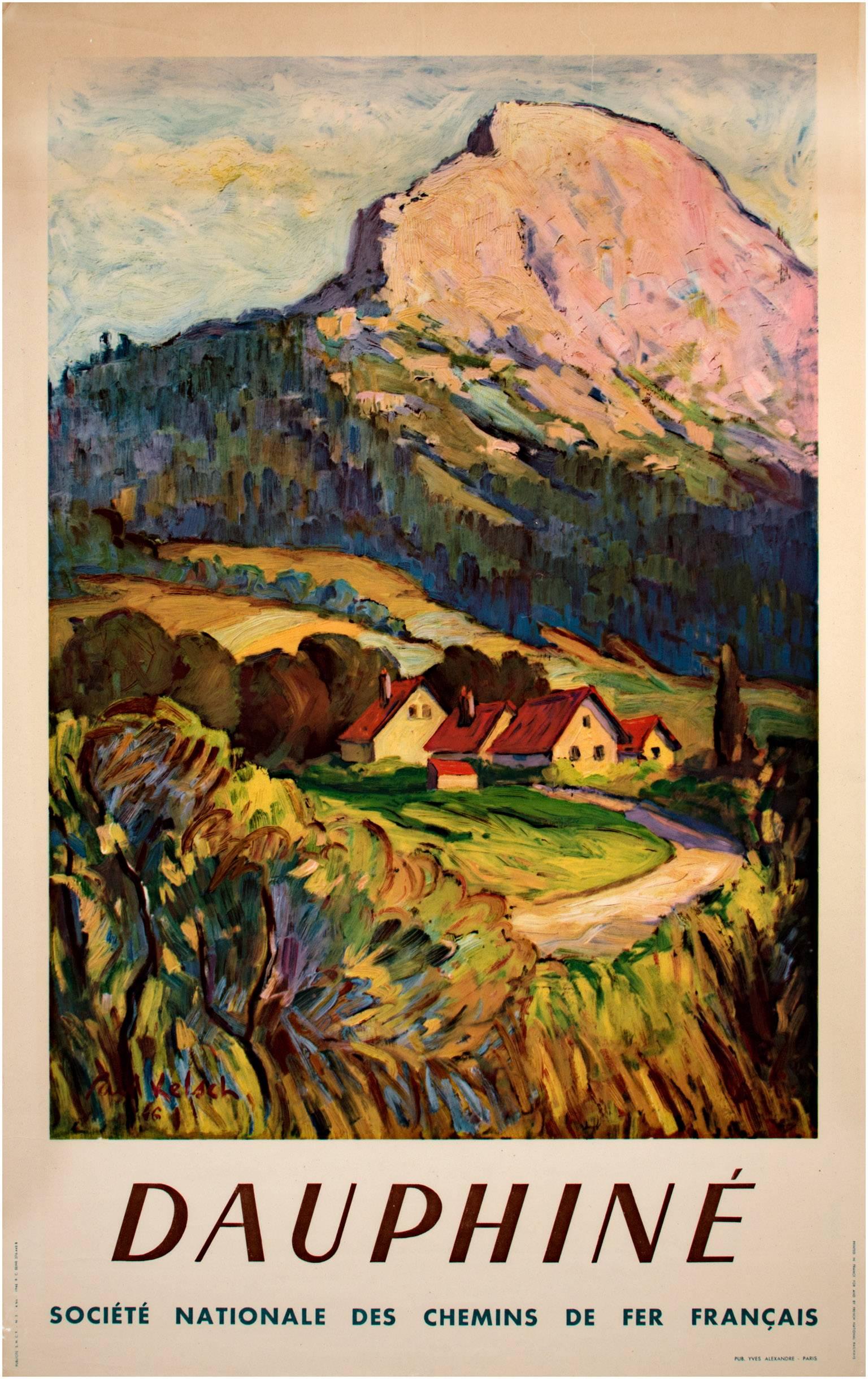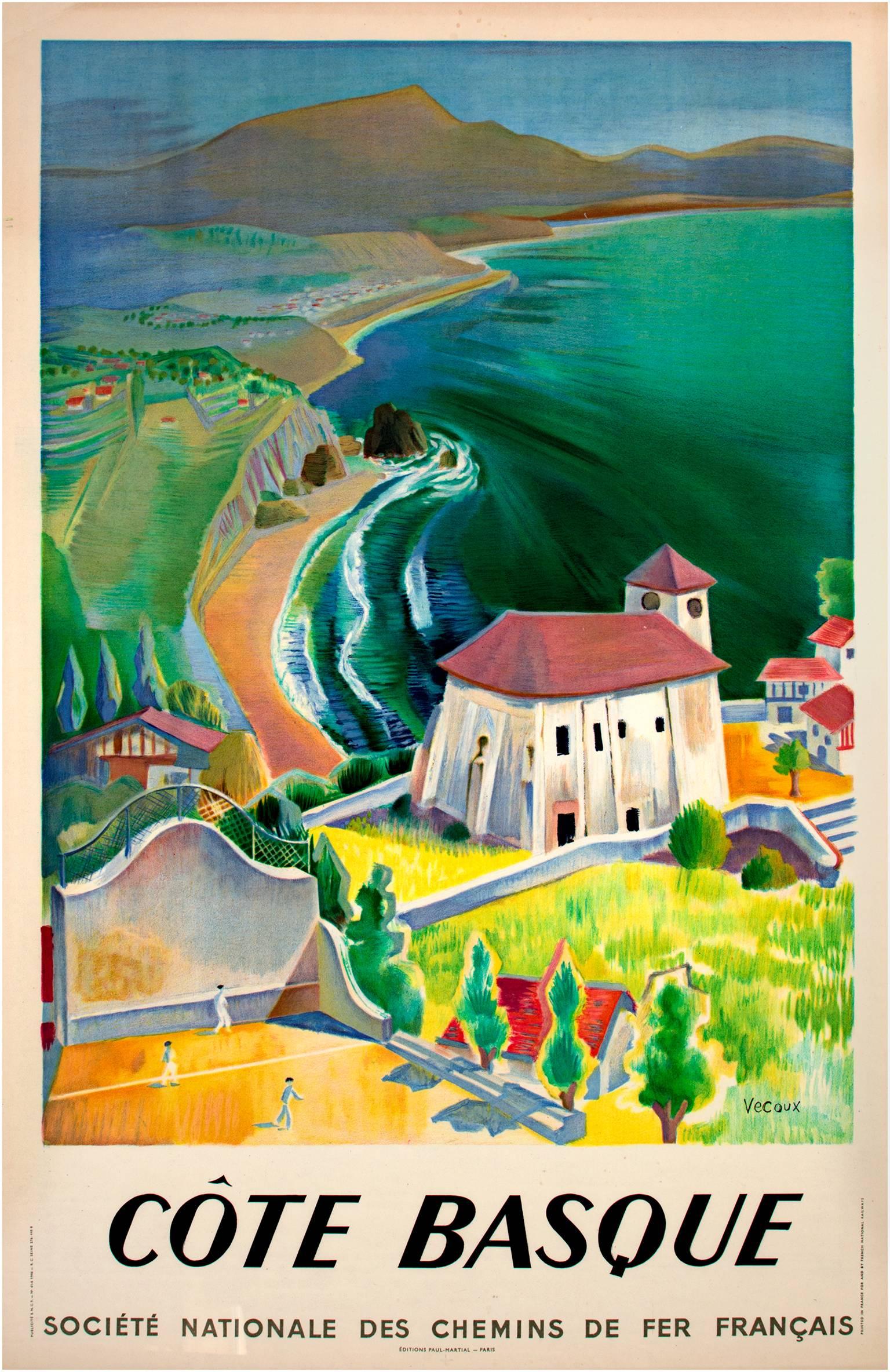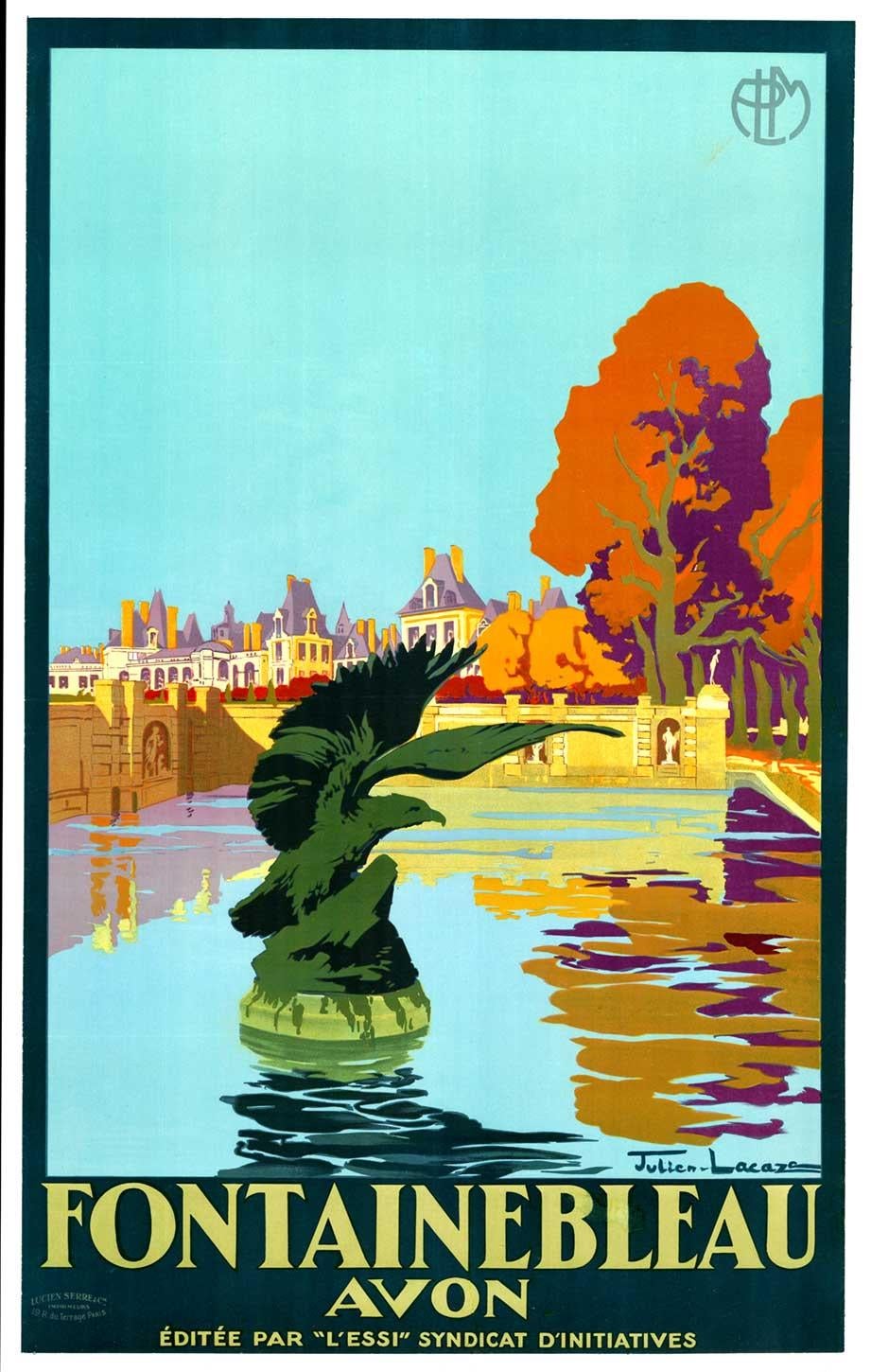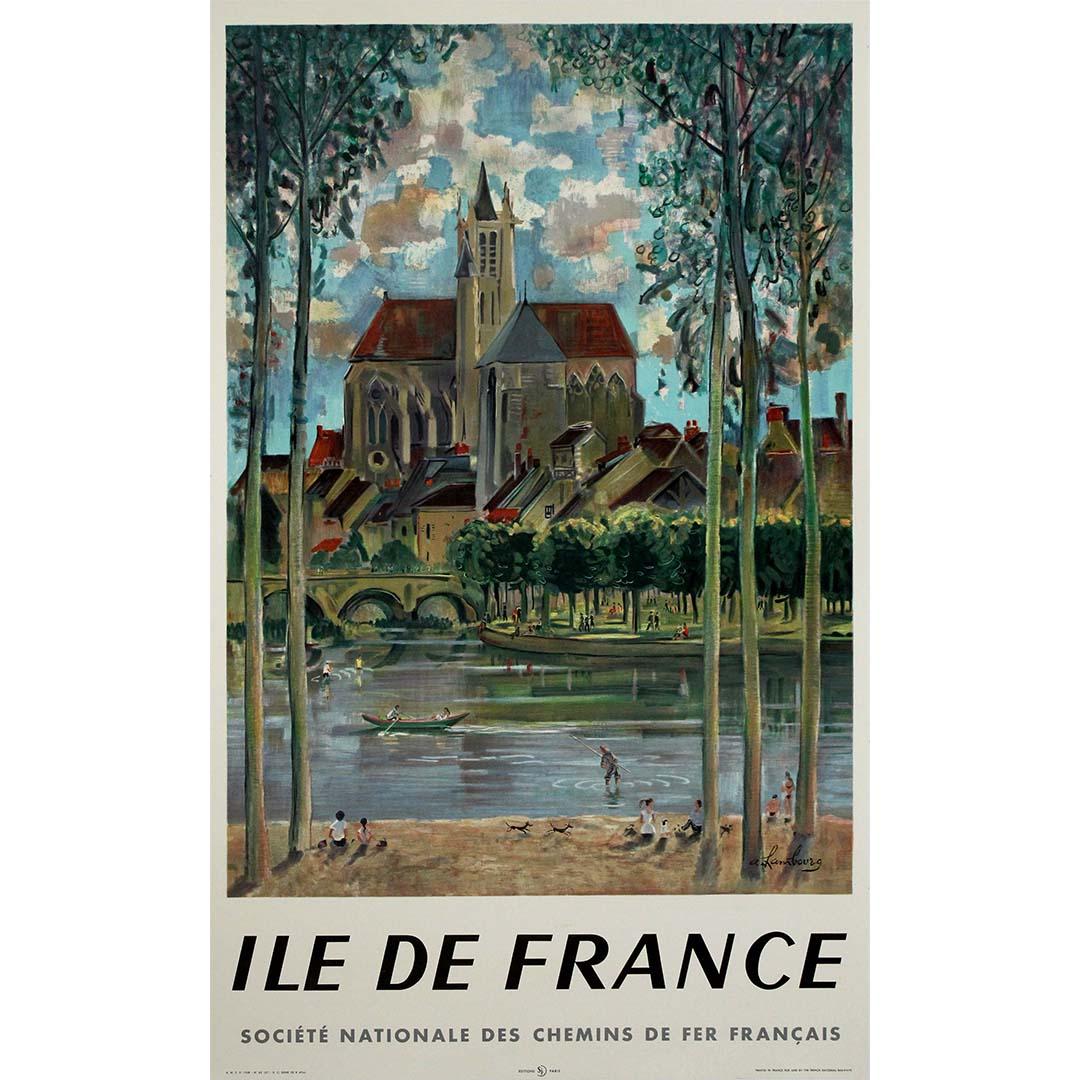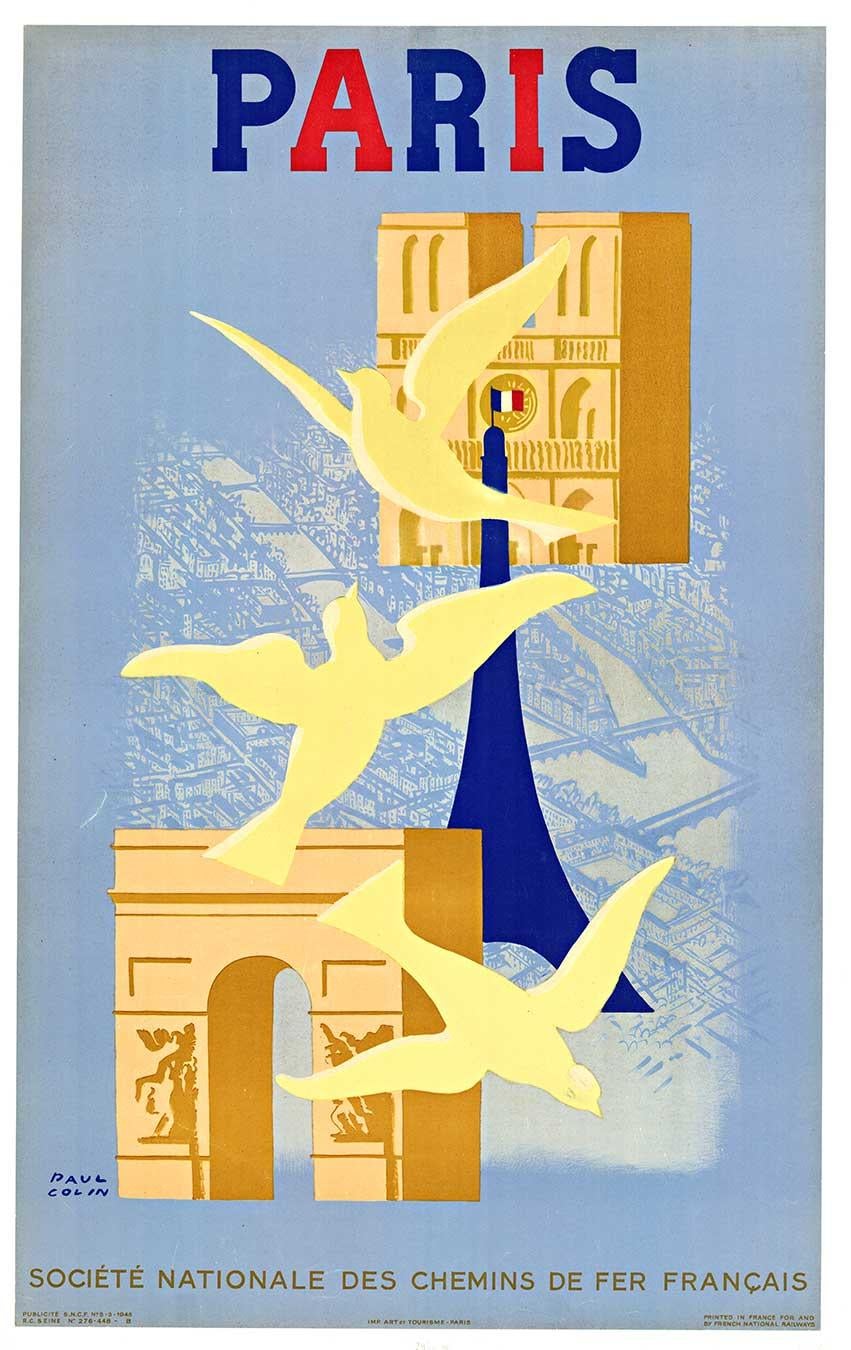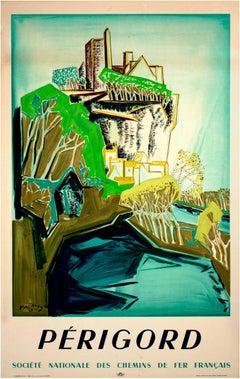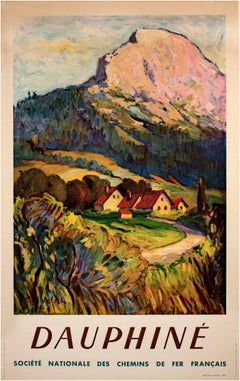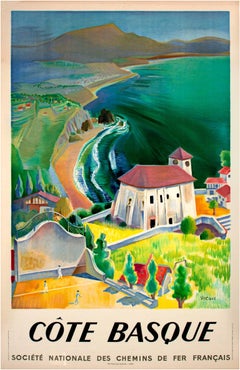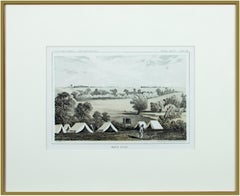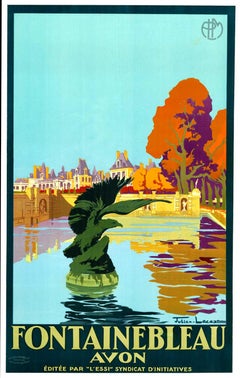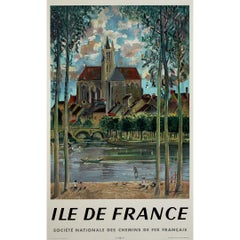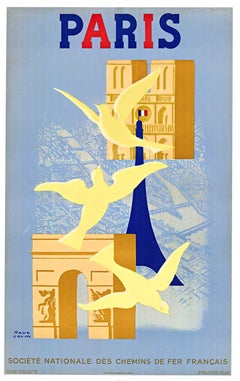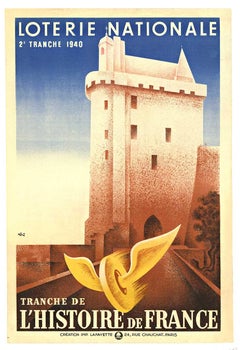Items Similar to Early 20th century color lithograph poster river building trees text
Want more images or videos?
Request additional images or videos from the seller
1 of 8
Robert AbelEarly 20th century color lithograph poster river building trees text1947
1947
$6,960
£5,418.83
€6,162.77
CA$10,011.75
A$10,999.69
CHF 5,748.51
MX$131,180.44
NOK 72,791.65
SEK 67,811.56
DKK 46,051.09
About the Item
"Chateaux De La Loire" is a signed original lithograph by Robert Abel. It depicts a view of one of the most iconic houses on the Loire River in France.
Left margin has multiple areas of paper missing.
39" x 24" paper
31 3/8" x 22" image
The SNCF, the French National Rail system, commissioned multiple posters to advertise and celebrate the connected locations on their routes after the Second World War. Abel's lithograph of the Chateaux de la Loire showcases the historic and natural beauty of the Loire Valley. This scene is in stark contrast to the destruction that the war had wrought all throughout France and the rest of Europe. Because of this, the set of posters would have reinforced the public's hope in a peaceful and beautiful France.
Printed in France for and by French National Railways; Publicite S.N.C.F.; No. 41-6, R.C. Seine No. 276.448B; Editions Paul Martial-Paris
- Creator:Robert Abel (1937, American)
- Creation Year:1947
- Dimensions:Height: 24 in (60.96 cm)Width: 39 in (99.06 cm)
- Medium:
- Period:
- Condition:
- Gallery Location:Milwaukee, WI
- Reference Number:Seller: 13777g1stDibs: LU60531916883
About the Seller
4.9
Gold Seller
Premium sellers maintaining a 4.3+ rating and 24-hour response times
Established in 1966
1stDibs seller since 2017
452 sales on 1stDibs
Typical response time: 1 hour
- ShippingRetrieving quote...Shipping from: Milwaukee, WI
- Return Policy
More From This Seller
View AllEarly 20th century color lithograph poster mountain building trees sky text
By Edouard-Georges Mac-Avoy 1
Located in Milwaukee, WI
"Perigord" is an original lithograph of a landscape created for the Societe Nationale des Chemis de fer Francais, the French National Railways. Artist Eduoard Georges Mac'Avoy worked...
Category
1940s Landscape Prints
Materials
Lithograph
Early 20th century color lithograph poster mountain field houses trees sky text
By Paul Kelsch
Located in Milwaukee, WI
"Dauphine" is an offset lithograph of a pastoral landscape created by Paul Kelsch for the Societe Nationale des Chemis de fer Francais, the French National Railways.
24" x 39" paper
30 1/2" x 21 1/8" image
48" x 33" frame
Small hole in each corner, crease in paper and image upper left, small holes lower left.
The SNCF, the French National Rail system, commissioned multiple posters to advertise and celebrate the connected locations on their routes after the Second World War. "Dauphine", created by Paul Kelsch, showcases a small village at the foot of a mountain bathed in the light of a sunset. Kelsch's technique employed impasto brush strokes and bright colors to capture the beauty of the landscape. This scene is in stark contrast to the destruction that the war had wrought in this area during the 1944 invasion. Because of this, the set of posters...
Category
1940s Other Art Style Landscape Prints
Materials
Lithograph
20th century color lithograph poster landscape pastoral building hills signed
By Vecoux
Located in Milwaukee, WI
"Cote Basque" is an original lithograph of the Basque region of France created by Vecoux for the Societe Nationale des Chemis de fer Francais, the French N...
Category
1940s Post-War Landscape Prints
Materials
Lithograph
'Maple River' original color lithograph by John Mix Stanley
By John Mix Stanley
Located in Milwaukee, WI
In the mid-nineteenth century, the United States government set out to survey and document its newly acquired lands and territories west of the Mississippi. The goals of these surveys were manifold: to produce topographical maps, to document flora and fauna, and to document natural resources to build the emerging US economy. These surveys, and the images from them, also functioned to build the new sense of American identity with the landscape, condensing vistas into the 'picturesque' tradition of European image making. Thus, the entire span of US territory could be seen as a single, cohesive whole.
This lithograph comes from one of six surveys commissioned by the Army's Topographic Bureau in 1853, which sought to find the best route to construct a transcontinental railroad. The result was a thirteen-volume report including maps, lithographs, and technical data entitled 'Explorations and Surveys to ascertain the most practicable and economical route for a Railroad from the Mississippi river to the Pacific Ocean.' Along with the image, Stanley also noted in the report of the Maple River: "It would be an excellent plan for an emigrant travelling through the country, before reaching one of these rivers on which he expects to camp, to catch a few frogs, for the purpose of fishing in these streams, which abound pike, picarel, and large catfish. Frogs are by far the best bait that can be used." This note from the artist perhaps describes some of the actions of the figures in the camp in the foreground of the image.
5.75 x 8.75 inches, image
6.5 x 9.25 inches, stone
13.25 x 16.25 inches, frame
Artist 'Stanley Del.' lower left
Entitled 'Maple River' lower center margin
Publisher 'Sarony, Major & Knapp. Lith.s 449 Broadway N.Y.' lower right
Inscribed 'U.S.P.R.R. EXP. & SURVEYS — 47th & 49th PARALLELS' upper left
Inscribed 'GENERAL REPORT — PLATE VIII' upper right
Framed to conservation standards using 100 percent rag matting and Museum Glass to inhibit fading; housed in a brass-surface aluminium moulding.
John Mix...
Category
1850s Romantic Landscape Prints
Materials
Lithograph
"Emprunt 4% 1918 - Appel, " Original Lithograph Poster by A. Malassinet
Located in Milwaukee, WI
"Emprunt 4% 1918 - Appel" is an original lithograph poster by A. Malassinet. This poster advertised a fund for the national defense during World War I. The following are two statemen...
Category
1910s Modern Landscape Prints
Materials
Lithograph
"Paris, " Original Lithograph Poster with Paris Landmarks signed by Paul Colin
By Paul Colin
Located in Milwaukee, WI
"Paris" is an original lithograph poster by Paul Colin. This was the first official poster from Paris after World War II and depicts three doves flying above the Arc de Triomphe, Not...
Category
1940s Post-War More Prints
Materials
Lithograph
You May Also Like
Original Fontainebleau Avon 1930s vintage French travel poster on linen backing
By Julien Lacaze
Located in Spokane, WA
Rare Original "Fontinebleua" Avon – artist Lulien Lacaze – Vintage PLM Railway Poster (Linen Backed).
Add a touch of classic French elegance to your collection with this authentic "...
Category
1930s Landscape Prints
Materials
Lithograph
Original 1958 lithographic poster by André Hambourg - Ile de France - SNCF
By André Hambourg
Located in PARIS, FR
This original 1958 lithographic poster, designed by French painter André Hambourg, was created for the SNCF (Société Nationale des Chemins de fer Français) to promote travel and tour...
Category
1950s Prints and Multiples
Materials
Linen, Paper, Lithograph
Original 1945 Paris (France) vintage travel poster travel by train
By Paul Colin
Located in Spokane, WA
Original PARIS linen-backed 1946 vintage travel poster, preservation linen-backed and ready to frame. Very good condition, Grade A-
Original 1946 Paul Colin Paris Vintage Poster ...
Category
1940s American Modern Landscape Prints
Materials
Lithograph
Original Loterie Nationale Tranche de L'Histoire de France vintage poster
Located in Spokane, WA
Original 1940 Loterie Nationale Vintage Poster. Tranche de l”Historie de France. Linen-backed in very good condition – excellent, ready to frame. The team of Eddgard Derouet and C...
Category
1940s Art Deco Landscape Prints
Materials
Lithograph
Original Vintage Chambord Poster by Alo 1932
Located in Boca Raton, FL
This vintage travel poster was created to promote tourism to the Château de Chambord, one of the Loire Valley’s most celebrated landmarks, through the Paris–Orléans–Midi railway. The...
Category
1930s Prints and Multiples
Materials
Lithograph
Original 1917 lithographic poster by Alphonse Grebel - Foire de Paris
By ALPHONSE grebel
Located in PARIS, FR
This original 1917 lithographic poster by Alphonse Grebel was created to promote the Foire de Paris, held from May 1st to 15th during the final years of World War I. Far beyond a sim...
Category
1910s Prints and Multiples
Materials
Paper, Lithograph, Linen
